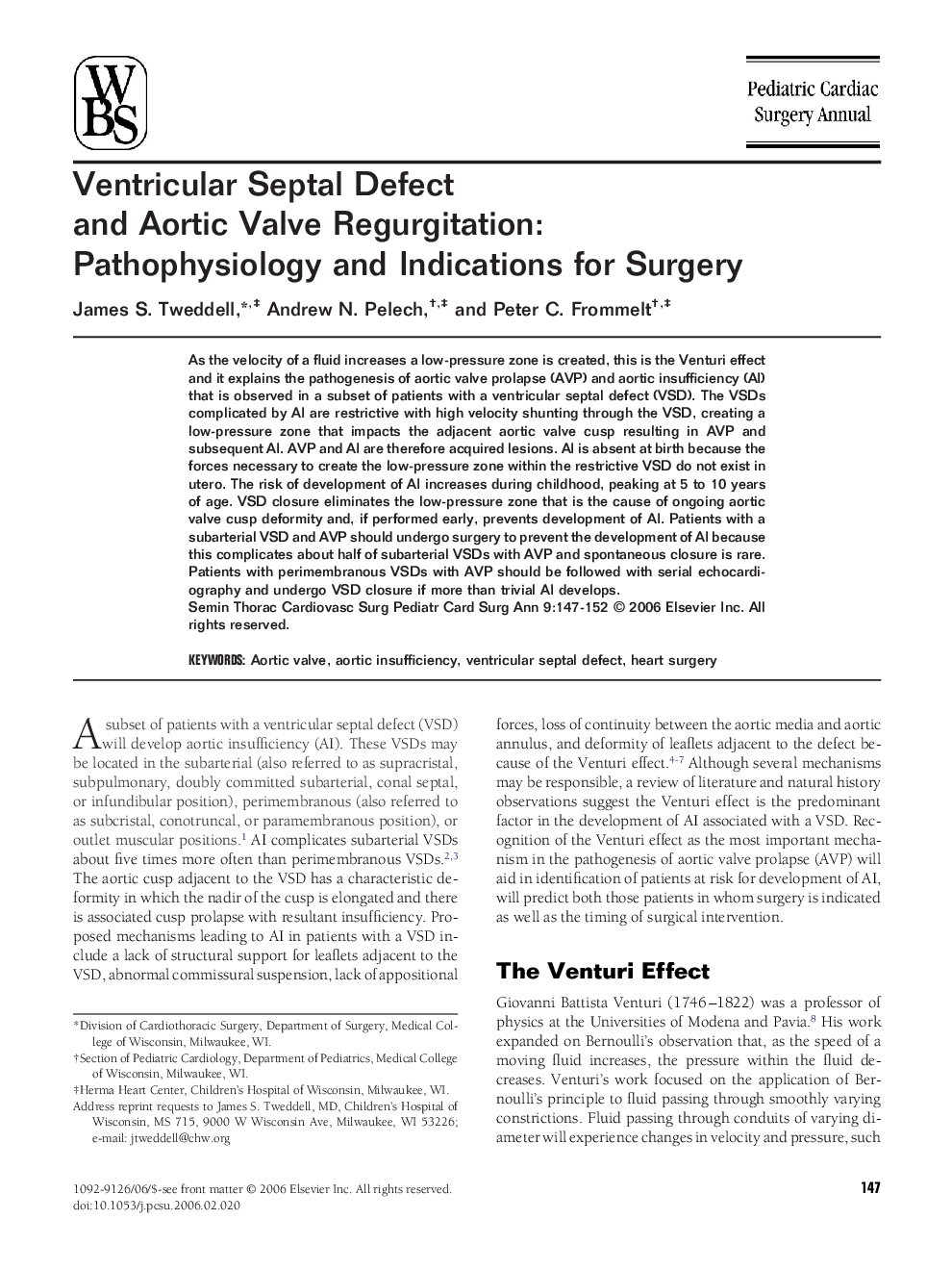| کد مقاله | کد نشریه | سال انتشار | مقاله انگلیسی | نسخه تمام متن |
|---|---|---|---|---|
| 3026069 | 1182850 | 2006 | 6 صفحه PDF | دانلود رایگان |

As the velocity of a fluid increases a low-pressure zone is created, this is the Venturi effect and it explains the pathogenesis of aortic valve prolapse (AVP) and aortic insufficiency (AI) that is observed in a subset of patients with a ventricular septal defect (VSD). The VSDs complicated by AI are restrictive with high velocity shunting through the VSD, creating a low-pressure zone that impacts the adjacent aortic valve cusp resulting in AVP and subsequent AI. AVP and AI are therefore acquired lesions. AI is absent at birth because the forces necessary to create the low-pressure zone within the restrictive VSD do not exist in utero. The risk of development of AI increases during childhood, peaking at 5 to 10 years of age. VSD closure eliminates the low-pressure zone that is the cause of ongoing aortic valve cusp deformity and, if performed early, prevents development of AI. Patients with a subarterial VSD and AVP should undergo surgery to prevent the development of AI because this complicates about half of subarterial VSDs with AVP and spontaneous closure is rare. Patients with perimembranous VSDs with AVP should be followed with serial echocardiography and undergo VSD closure if more than trivial AI develops.
Journal: Seminars in Thoracic and Cardiovascular Surgery: Pediatric Cardiac Surgery Annual - Volume 9, Issue 1, 2006, Pages 147–152